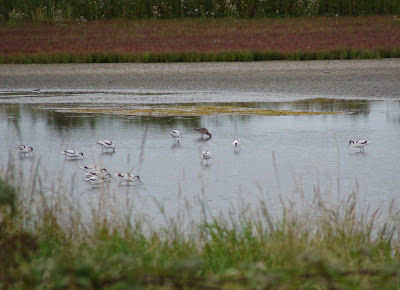 |
| Sir David Attenborough and Errol Fuller in conservation with Daniel Finkelstein, 27/9/12 |
Like a lot of other kids I grew up with David Attenborough's genial, khaki-clad persona accompanying countless memorable images and stories from his nature series on the TV; so I was really excited to have the chance to see him 'in person' at a Times event in Bloomsbury on Thursday evening.
The event saw Sir David in conversation with the chief arts editor of the paper, alongside Errol Fuller, with whom he has collaborated on a new project. The pair were talking about 'Drawn from Paradise' - a stunning new book that charts the natural history and artistic representation of New Guinea's amazing Birds of Paradise. After some endearing fumbles with a laptop, the pair discussed a handful of the 42 (or so) species of the endemic Birds of Paradise, recounting their own adventures en route and close calls with dangerous snakes and cannibals among other things!
It was interesting to hear how the birds achieved there familial name. When early explorers arrived in the area, they were shown the exotic skins of the birds that, for decorative purposes, were missing both wings and feet. Never having seen such dazzling items before and being confused by their appearance, they were apparently reported back as being from birds that literally 'floated in paradise', drinking sun dew from clouds (!). These incredible plumes have been able to evolve because the bird's forest habitat is relatively 'new' and being an island with fragmented populations means there are few mammalian predators to trouble them. As a result they have evolved to be as gaudy and showy as they like:
But conversely it is these magnificent, attention-seeking plumes that actually guarantee the birds some degree of safety in the forests. While some hunting does occur, the birds have important cultural value to local people and their plumes continue to play a role in decoration and status-wear. Before becoming a Hollywood star, apparently Errol Flynn tried his hand in the New Guinea plume trade before a series of dubious events saw him return to America. But it seems the main threat to these birds is from encroaching development on their rainforest habitat - something which even a an island as remote as New Guinea is experiencing. At the conclusion of the Q&A that followed, Sir David, with such characteristic verbal dexterity, gave an impassioned plea to preserve many such ecosystems around the world. Marketing conservation around a single species such as polar bears or pandas is all well and good, but it is protection of ecosystems that is key. Prompted to identify one, it was the loss of rainforests that "represents a real, real threat to mankind" in his view. The mountainous rainforests of Papua New Guinea are just one example of such threatened habitats, but in the Birds of Paradise contain one of the most stunningly vivid examples of evolution and biodiversity. In his words, "who could've dreamed them up?!".
 |
| Lawe's Parotia (Parotia lawesii) by Richard Bowdler Sharpe/WikiCommons |
Donate - Support - Save the rainforests
Check out 'Drawn from Paradise' here, it's a beautiful book.
















